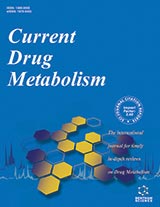摘要
血液肿瘤扩张(HE)定义为头24小时内颅内出血量(ICH)大于33%的增加,导致显着的神经功能缺损,并增强ICH诱发的原发性和继发性脑损伤。使用口服抗凝剂的升级导致口服抗凝血相关ICH(OAT-ICH)的发生率激增,这与ICH的更大风险和更差的功能结局相关。使用的口服抗凝剂包括维生素K拮抗剂和直接凝血酶和因子Xa抑制剂。纤维蛋白溶解剂也经常给药。这些都通过不同的机制起作用,从而对HE和ICH结果有不同程度的影响。此外,抗血小板药物也越来越多,ICH后出血风险增加,结果更差。阿司匹林,噻吩并吡啶类和GPIIb / IIIa受体阻断剂是临床上最常见的药物之一,也是根据其作用机制对ICH和出血生长有不同的影响。最近的研究发现,与抗血小板药相比,降低血小板活性可能比预防ICH风险,出血扩张和结局更有效,因此激活血小板可能是ICH治疗的新靶点。本综述探讨凝血和血小板级联中的功能障碍或改变如何导致脑内出血后血肿扩张和/或加剧,并描述这些作用背后的机制和诱导它们的药物。我们还讨论了旨在提高ICH后血小板活性的潜在未来疗法。
关键词: 血肿扩张,脑内出血,抗凝血剂,抗血小板药,口服抗凝血剂相关ICH,C型凝集素样受体2,血小板活化。
图形摘要
Current Drug Targets
Title:Hematoma Expansion Following Intracerebral Hemorrhage: Mechanisms Targeting the Coagulation Cascade and Platelet Activation
Volume: 18 Issue: 12
关键词: 血肿扩张,脑内出血,抗凝血剂,抗血小板药,口服抗凝血剂相关ICH,C型凝集素样受体2,血小板活化。
摘要: Hematoma expansion (HE), defined as a greater than 33% increase in intracerebral hemorrhage (ICH) volume within the first 24 hours, results in significant neurological deficits, and enhancement of ICH-induced primary and secondary brain injury. An escalation in the use of oral anticoagulants has led to a surge in the incidences of oral anticoagulation-associated ICH (OAT-ICH), which has been associated with a greater risk for HE and worse functional outcomes following ICH. The oral anticoagulants in use include vitamin K antagonists, and direct thrombin and factor Xa inhibitors. Fibrinolytic agents are also frequently administered. These all act via differing mechanisms and thus have varying degrees of impact on HE and ICH outcome. Additionally, antiplatelet medications have also been increasingly prescribed, and result in increased bleeding risks and worse outcomes after ICH. Aspirin, thienopyridines, and GPIIb/IIIa receptor blockers are some of the most common agents in use clinically, and also have different effects on ICH and hemorrhage growth, based on their mechanisms of action. Recent studies have found that reduced platelet activity may be more effective in predicting ICH risk, hemorrhage expansion, and outcomes, than antiplatelet agents, and activating platelets may thus be a novel target for ICH therapy. This review explores how dysfunctions or alterations in the coagulation and platelet cascades can lead to, and/or exacerbate, hematoma expansion following intracerebral hemorrhage, and describe the mechanisms behind these effects and the drugs that induce them. We also discuss potential future therapy aimed at increasing platelet activity after ICH.
Export Options
About this article
Cite this article as:
Hematoma Expansion Following Intracerebral Hemorrhage: Mechanisms Targeting the Coagulation Cascade and Platelet Activation, Current Drug Targets 2017; 18 (12) . https://dx.doi.org/10.2174/1389450118666170329152305
| DOI https://dx.doi.org/10.2174/1389450118666170329152305 |
Print ISSN 1389-4501 |
| Publisher Name Bentham Science Publisher |
Online ISSN 1873-5592 |
Related Books
 48
48 5
5 1
1
- Author Guidelines
- Bentham Author Support Services (BASS)
- Graphical Abstracts
- Fabricating and Stating False Information
- Research Misconduct
- Post Publication Discussions and Corrections
- Publishing Ethics and Rectitude
- Increase Visibility of Your Article
- Archiving Policies
- Peer Review Workflow
- Order Your Article Before Print
- Promote Your Article
- Manuscript Transfer Facility
- Editorial Policies
- Allegations from Whistleblowers
Related Articles
-
Phenolic Acids Exert Anticholinesterase and Cognition-Improving Effects
Current Alzheimer Research Cannabinoids and Neurodegenerative Diseases
CNS & Neurological Disorders - Drug Targets Practical Review of Mechanical Ventilation in Adults and Children in the Operating Room and Emergency Department
Reviews on Recent Clinical Trials Editorial (Thematic Issue: Immunophilins, Protein Chemistry and Cell Biology of a Promising New Class of Drug Targets – Part II)
Current Molecular Pharmacology Conference Report: 181<sup>st</sup> Annual Meeting of the American Association for the Advancement of Science (AAAS), San Jose Convention Center, San Jose, CA, USA February 12-16, 2015
CNS & Neurological Disorders - Drug Targets Editorial [Hot Topic: Innate Immune Responses in CNS Neurodegenerative Diseases (Guest Editors: Hans van Noort and Sandra Amor)]
CNS & Neurological Disorders - Drug Targets Pulmonary and Nasal Anti-Inflammatory and Anti-Allergy Inhalation Aerosol Delivery Systems
Anti-Inflammatory & Anti-Allergy Agents in Medicinal Chemistry A Critical and Comprehensive Insight on Heme Oxygenase and Related Products Including Carbon Monoxide, Bilirubin, Biliverdin and Ferritin in Type-1 and Type-2 Diabetes
Current Pharmaceutical Design Erythropoietin: New Approaches to Improved Molecular Designs and Therapeutic Alternatives
Current Pharmaceutical Design Potential Drugs Targeting Microglia: Current Knowledge and Future Prospects
CNS & Neurological Disorders - Drug Targets Proteomic Analysis of Neutrophil Priming by PAF
Protein & Peptide Letters Getting to Know the Cast - Cellular Interactions and Signaling at the Neurovascular Unit
Current Pharmaceutical Design The Role of IRE1 Signaling in the Central Nervous System Diseases
Current Neuropharmacology Ultrasound Imaging of Muscle-tendon Architecture in Neurological Disease: Theoretical Basis and Clinical Applications
Current Medical Imaging The Breath of Life: Recent Patents on Placental and Amnion Derived Cells for Treatment of Bronchopulmonary Dysplasia
Recent Patents on Regenerative Medicine Curcumin Efficacy in a Serum/Glucose Deprivation-Induced Neuronal PC12 Injury Model
Current Molecular Pharmacology Pulmonary Arterial Hypertension: Need to Treat
Inflammation & Allergy - Drug Targets (Discontinued) Current Research on Opioid Receptor Function
Current Drug Targets Antenatal Maternal Antidepressants Drugs Affect S100B Concentrations in Fetal-Maternal Biological Fluids
CNS & Neurological Disorders - Drug Targets Amiloride Alleviates Neurological Deficits Following Transient Global Ischemia and Engagement of Central IL-6 and TNF-α Signal
Current Molecular Medicine


























